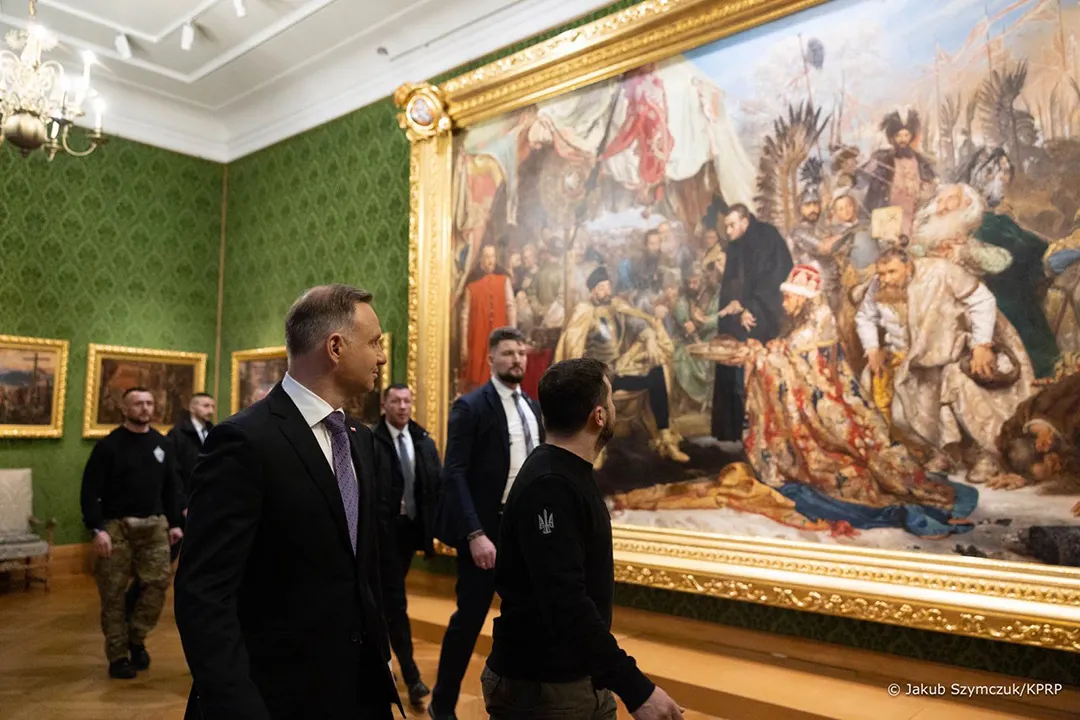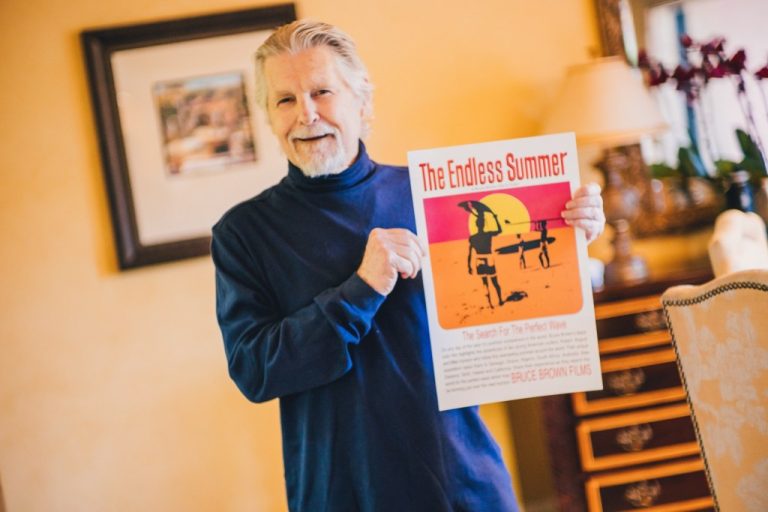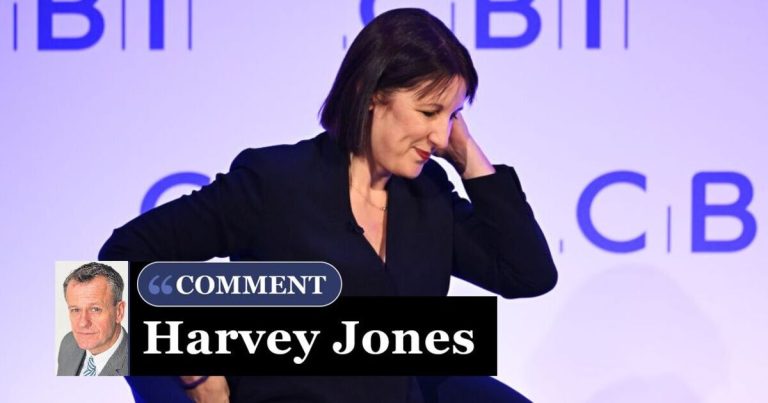
Is a picture really worth a thousand words? Failed painter Adolf Hitler seemed to think so when he ordered his Nazi operatives to locate and destroy “The Battle of Grunwald,” a famous masterpiece by Polish painter Jan Matejko. The imposing canvas, created in 1878, depicted the 1410 victory of King Jagiello of Poland over an army of German Knights.
Even as the neighboring country of Ukraine is fighting for its freedom, and millions of refugees are crossing the Polish border, Poland voted to make 2023 the year of Jan Matejko, and for a very good reason. Matejko’s art symbolizes the global struggle for national identity and independence from foreign rule. On larger-than-life canvasses, often imported from far-away Paris, this 19th-century painter recreated the most significant landmark events in Polish history. He did it to warm the hearts of his countrymen but also to ensure that they would never give up the fight for national freedom.
One of Matejko’s creations recently caught the eye of Ukrainian president Volodymyr Zelenskyy. During his visit to the Royal Castle in Warsaw, Zelenskyy examined Matejko’s famous painting “Stephen Bathory at Pskov,” commemorating Bathory’s successful military campaign against Russia in 1580. That year, Ivan IV (commonly known as Ivan the Terrible) conceded defeat and sued the Polish King for peace. In this colorful allegory, Matejko shows Ivan’s envoys kneeling before King Bathory. The message for Zelenskyy was clear: Yes, Russia can be defeated.

Zelenskyy visiting the Royal Castle in Warsaw where he examined Matejko’s famous painting “Stephen Bathory at Pskov,” commemorating Bathory’s successful military campaign against Russia in 1580. (Kancelaria Prezydenta RP, Jakub Szymczuk)
Although famous and beloved in his native Poland, Jan Matejko is not so well known this side of the Atlantic.
Born in 1838 in Krakow, the ancient capital of Poland, Jan Matejko was a descendant of immigrants. His father was a Czech musician who relocated to Krakow and married a woman of German heritage. At that time, Poland, formerly a powerful empire itself, was occupied and partitioned by three neighboring powers: Prussia, Russia and the Austro-Hungarian Empire. Southern Poland, where Krakow is located, was thrust under the thumb of Austrian rule.

Portrait of Jan Matejko (1838-1893), circa 1880. Private Collection. Artist Photo studio Waleri Rzewuski. (Photo by Fine Art Images/Heritage Images via Getty Images).)
STRATEGIC PARTNERS POLAND AND UKRAINE EXCHANGE REMARKS OVER VIOLENT PAST
It did not take long for Matejko’s parents to fall in love with Krakow and become true Polish patriots. They planted this love in the hearts of their children, and so their son Jan, a painting prodigy, embarked on a quest to bring back to life some eight hundred years of glory for the Polish Kingdom.
Matejko’s genius was recognized in Europe early on, and it wasn’t long before he took charge of the Krakow School of Fine Arts. Wealth and celebrity followed. He had the resources, the knowledge and the passion to paint Poland back onto the map of Europe. A prolific artist, Matejko produced over 320 canvases, including “The Baptism of Poland,” “Sobieski at Vienna,” “Constitution of May 3. 1979,” “Kosciuszko at the Battle of Raclawice” and “Astronomer Copernicus or Conversations with God,” to name just a few.
By the time the 10th century A.D. rolled around, being Pagan in Europe was no longer in vogue. Christianity had spread throughout much of the continent, and Mieszko the First, ruler of Poland, decided to bring his people up to speed with the rest of Christendom and baptize the entire nation.
He took a Christian princess, Doubravka of Bohemia, for his wife and on April 14, 966, was baptized along with his entire court. This event, known at the Baptism of Poland, is considered the birth of the modern Polish nation. The importance of it was not lost on Matejko. His colorful depiction of Mieszko’s christening stands as a reminder of Poland’s beliefs and traditions spanning over a thousand years now. This masterpiece can be found at Warsaw’s Royal Castle.

The Christianization of Poland, 966. From the series History of Civilization in Poland, 1889. Found in the Collection of Muzeum Narodowe, Warsaw. ((Photo by Fine Art Images/Heritage Images/Getty Images))
Anyone who visits the Vatican Museum has the opportunity to see an enormous canvas depicting Polish King Jan Sobieski defeating the Ottomans at the Gates of Vienna. Jan Matejko traveled to Rome and presented this painting to Pope Leo XII as a “gift from the Polish nation.” Well aware that King Sobieski and his army of Polish hussars had saved both Europe and Christendom, the pope awarded the painter the title Knight Commander with Star of the Order of Pius IX. This impressive painting can be found in the Sobieski Room at the Vatican.

John III Sobieski sending message of victory to the Pope Innocent XI after the Battle of Vienna, 1883. Found in the Collection of Musei Vaticani in Viale Vaticano, Rome. (Photo by Fine Art Images/Heritage Images/Getty Images))
Poland created a constitution of its own, granting rights to its citizens. It was the high point of the Polish Enlightenment. Matejko brilliantly captured the euphoria of that moment: Poland’s last King, Stanislaw August Poniatowski, is carried by his grateful subjects through the streets of Warsaw.
POLAND SAYS NO TO ANY ‘ARTIFICIAL PEACE PLAN’ BETWEEN UKRAINE, RUSSIA
Unfortunately for Poland, the neighboring powers of Prussia, Russia and the Austro-Hungarian Empire did not welcome the ideals of American style democracy. They began to see the Polish-Lithuanian Commonwealth as a threat to their absolute grip on power, and Poland paid dearly for it. Turbulent times and subsequent partitions followed. To commemorate Poland’s long quest for freedom, Matejko painted “Kosciuszko at the Battle of Raclawice.”

“Constitution of May 1791” by Matejko (1891). King Stanislaw August enters St John’s Cathedral, Warsaw, Poland. The painting depicts King Stanislaw Augustus together with members of the Grand Sejm and inhabitants of Warsaw entering St. John’s Cathedral in order to swear in the new national constitution just after it had been adopted by the Grand Sejm in the Royal Castle visible in the background. (Photo by: Universal History Archive/Universal Images Group via Getty Images))
Tadeusz Kosciuszko was a hero of the American Revolution and the architect of West Point as well as a revolutionary in his own country. In his painting, Matejko chose to depict Kosciuszko wearing an American army uniform. After all, if America could win its independence against steep odds, perhaps Poland could as well.

Tadeusz Kosciuszko after the Battle of Raclawice, 1888. Found in the collection of the Muzeum Narodowe, Krakow. Artist Matejko, Jan Alojzy (1838-1893). (Photo by Fine Art Images/Heritage Images via Getty Images))
ON THIS DAY IN HISTORY, MARCH 16, 1802, UNITED STATES MILITARY ACADEMY ESTABLISHED AT WEST POINT
One of Matejko’s best-known works was recently exhibited in London, “Copernicus or Conversations with God.” It pictures Polish astronomer Nicholas Copernicus in his observatory, thanking God for allowing him to comprehend the true nature of the solar system. Copernicus, known as the man who stopped the Sun and moved the Earth, revolutionized astronomy and subsequently ushered in the Age of Enlightenment in Europe. The astronomer was Matejko’s most beloved hero, and the painting, part of the collection of the Jagiellonian University in Krakow, is bursting with Matejko’s Polish pride.

Nicolaus Copernicus painting ‘a conversation with God.’ (Courtesy: Ze zbiorów Muzeum UJ/Jagiellonian University Museum Collections. Licencjia: CC BY 4.0 Uznanie autorstwa 4.0.)
Utilizing historic descriptions, drawings, paintings and artifacts, Matejko recreated the likenesses of Polish kings, queens and rulers, 44 portraits in total. These images are not only engraved in the imagination of every Polish child from their earliest elementary education, but used in history books, encyclopedias, post office stamps, souvenirs and banknotes.
Jan Matejko is the national painter of Poland, an artist, a patriot, a freedom fighter. His legacy lives on in the museums and the hearts of his countrymen.
CLICK HERE TO GET THE FOX NEWS APP
As for Adolf Hitler, he never got his wish. At the outset of World War II, Polish citizens managed to hide many of the nation’s most precious treasures.
“The Battle of Grunwald” canvas was carefully wrapped and buried under a layer of asphalt near the city of Lublin. The Nazis were never able to find it.

Battle of Grunwald, 1410. Painting by Jan Matejko. The Battle of Grunwald was fought on 15 July 1410, during the Polish-Lithuanian-Teutonic War. The alliance of the Kingdom of Poland and the Grand Duchy of Lithuania achieved victory over the German-Prussian Teutonic Knights. ((Photo by: Photo12/Universal Images Group via Getty Images))
After the war, the painting was restored to its original glory. It can be viewed at the National Museum of the Royal Palace in Warsaw.
Jan Matejko died in Krakow in 1893, and some 25 years later his beloved Poland regained its independence at the end of WWI.







